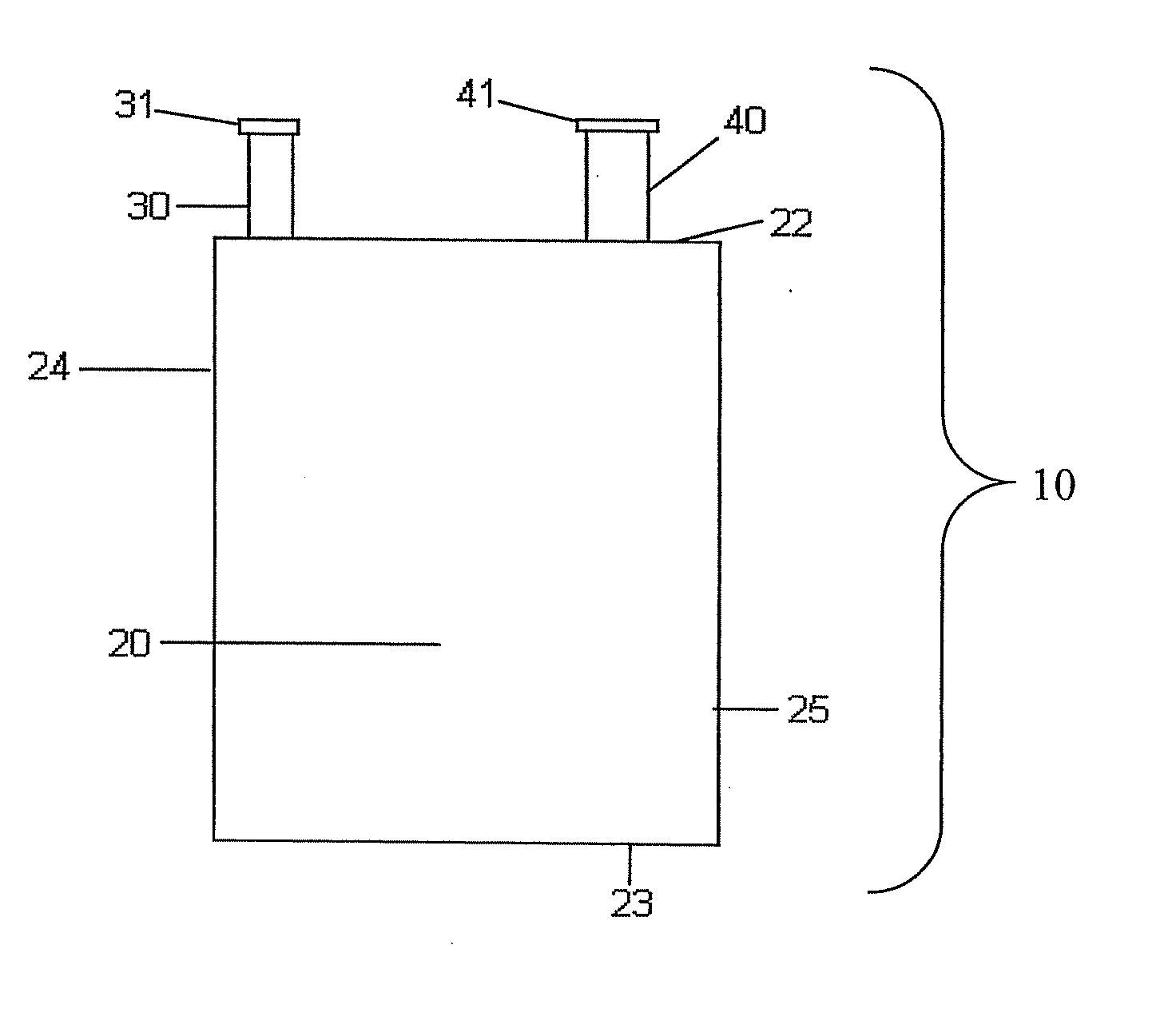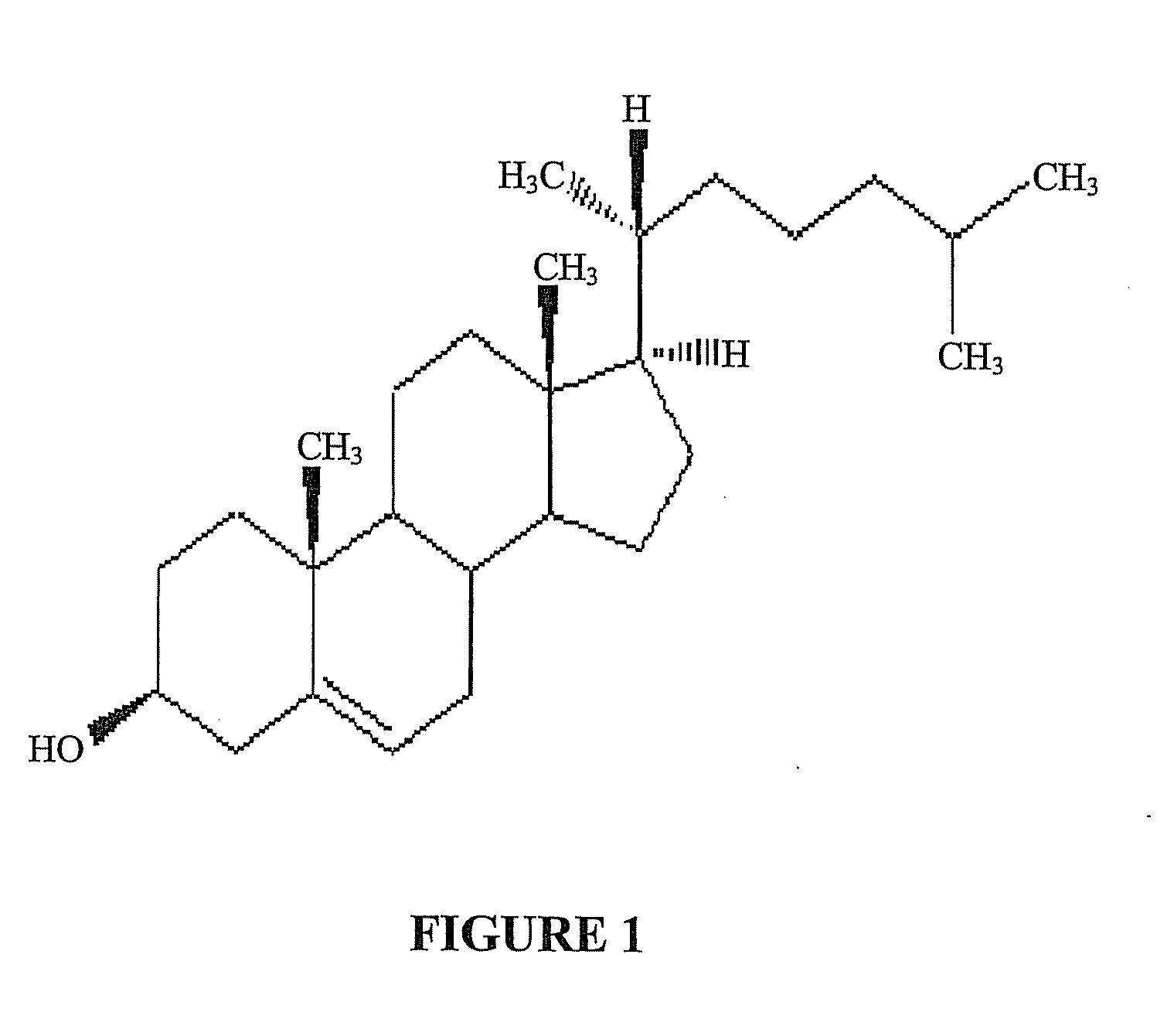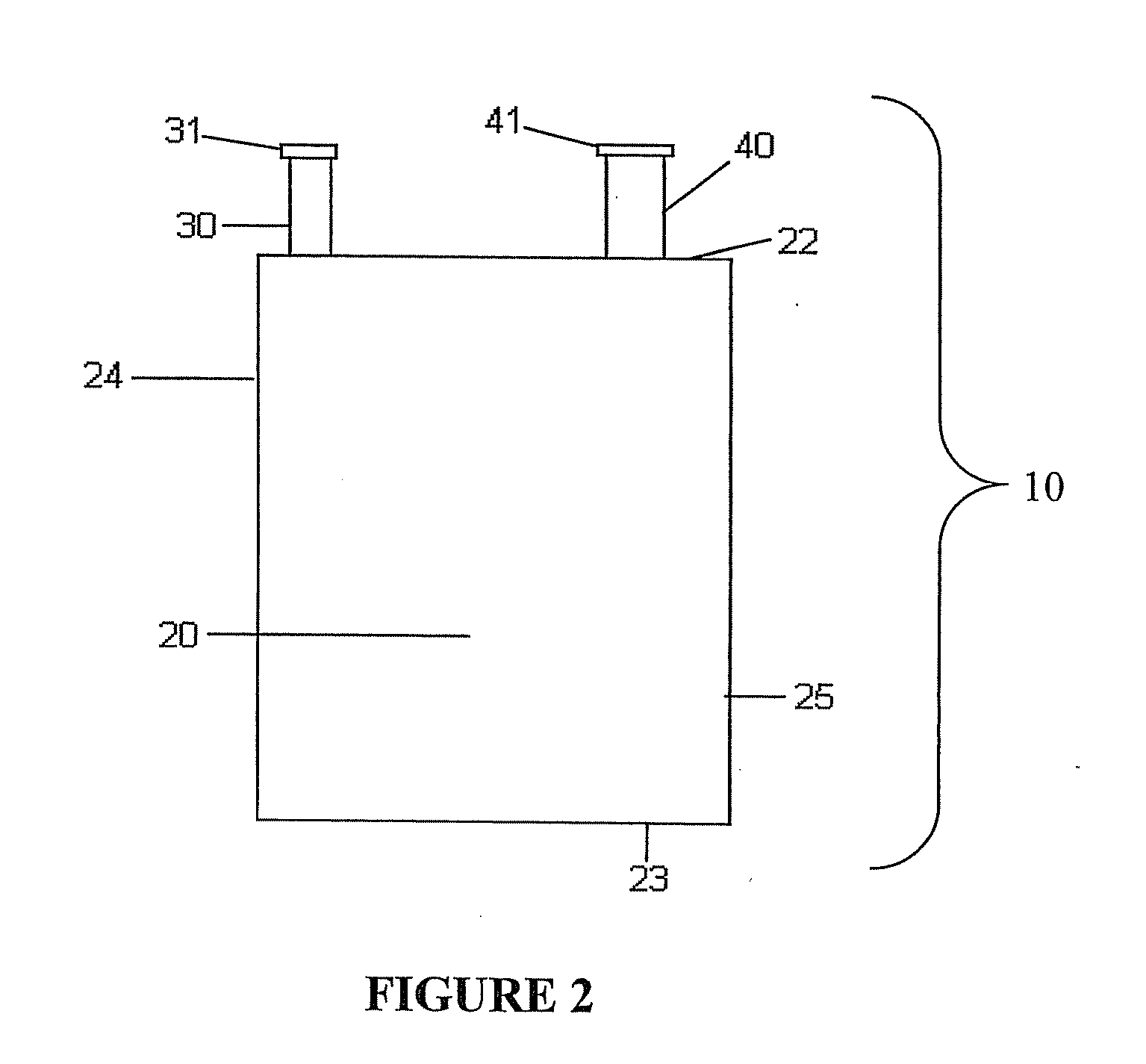Cell Culture Apparatus and Methods
a cell culture apparatus and cell culture technology, applied in biochemistry apparatus and processes, specific use bioreactors/fermenters, after-treatment of biomass, etc., can solve the problems of high serum price and undesirable effects, scientific difficulties in culturing some cell types, and low productivity of cholesterol independent cells
- Summary
- Abstract
- Description
- Claims
- Application Information
AI Technical Summary
Benefits of technology
Problems solved by technology
Method used
Image
Examples
working examples
[0052] Cholesterol-dependent NS0 cells had low cell growth in low density polyethylene (LDPE) cell culture bags using commercial available media supplemented with chemically defined cholesterol. Various experiments were performed to determine what may have attributed to the lack of growth, including, evaluation of bag material (described in Example 1—it was determined that some bag materials supported cell growth better than LDPE bags); evaluation of cholesterol source (described in Example 2—it was determined that only serum supplement supported growth in LDPE bags), cell line specificity (comparing growth between cholesterol-dependent NS0 cell line to non-cholesterol dependent NS0 cell line—it was determined that the former could not grow in LDPE bags); effects of other components in the media, for example, leachables from the bag material, or suboptimal operating conditions (attempts to support growth by modification of temperature, aeration strategy, rocking rate and speed, did ...
example 1
Evaluation of Bag Material
[0053] Different bag materials were tested and cholesterol depletion from the media in each was quantified. Low-density polyethylene (LDPE) and linear low density polyethylene (LLDPE) bags are commonly used in medical applications for blood collection and handling of biological fluids. Polypropylene (PP) bags have been used for storage. Fluorinated ethylene-propylene copolymer (FEP) bags are used for storage and cell culture. Additionally, an ultra low density polyethylene bag (ULDPE) was also tested. The specifications of bags tested are summarized in Table 1.
[0054] Cholesterol-dependent antibody producing, GS-NS0 myeloma cells were cultured in 10 L LDPE bags using the WAVE BIOREACTOR™ system according to manufacturer's instructions (Wave Biotech, New Jersey). Briefly, protein-free, chemically defined CD Hybridoma media (commercially available from Gibco / Invitrogen) was filter-sterilized with 0.22 μm cellulose acetate filter (Corning) and added to the 10...
example 2
Evaluation of Cholesterol Source
[0063] Different cholesterol sources have been shown to effect NS0 cell growth (Gorfien, S., Paul, B., Walowitz, J., Keem, R., Biddle, W. and Jayme, D. Growth of NS0 cells in protein-free, chemically defined medium. Biotechnol Prog 2000, 16(5): 682-7). Therefore, three different cholesterol sources were evaluated to determine their effect on cell growth in LDPE cell culture bags. The experiment was conducted using the protocol described in Example 1, with modifications as indicated below. The results are shown in FIG. 5.
[0064] Chemically defined cholesterol (CDC) (commercially available from Gibco / Invitrogen) was diluted to 1×-5× the concentration recommended by the manufacturer and added to the CD Hybridoma medium. The cells did not grow in the LDPE culture bag when supplemented with CDC. However, the same cell line has been known to grow successfully in, other vessels, such as glass and stainless steel bioreactors, shake flasks, and T-flasks, when...
PUM
| Property | Measurement | Unit |
|---|---|---|
| light wave lengths | aaaaa | aaaaa |
| volumes | aaaaa | aaaaa |
| volumes | aaaaa | aaaaa |
Abstract
Description
Claims
Application Information
 Login to View More
Login to View More - R&D Engineer
- R&D Manager
- IP Professional
- Industry Leading Data Capabilities
- Powerful AI technology
- Patent DNA Extraction
Browse by: Latest US Patents, China's latest patents, Technical Efficacy Thesaurus, Application Domain, Technology Topic, Popular Technical Reports.
© 2024 PatSnap. All rights reserved.Legal|Privacy policy|Modern Slavery Act Transparency Statement|Sitemap|About US| Contact US: help@patsnap.com










